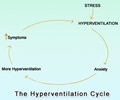
They are mainly generated by burning coal and oil for power stations, and petrol and diesel for transport.
Around 30 times smaller than a human hair, PM2.5 particles have long been identified as a respiratory problem, as their size enables them to lodge deep in the lungs. Less understood, though, is their impact on cardiac health.
Cathryn Tonne at the London School of Hygiene and Tropical Medicine led a study into 154,000 patients in England and Wales who had been hospitalised for a heart attack between 2004 and 2007.
They followed the patients for more than three years after their release from hospital. During this period, nearly 40,000 of them died.
After stripping out factors that could skew the picture such as socio-economic status and smoking, the researchers found a clear link between exposure to PM2.5 and early death.
Advertisement
"We found that for every 10 microgrammes per M3 in PM2.5, there was a 20-percent increase in the death rate," said Tonne.
Advertisement
The average exposure to PM2.5 in England was 11.0 microgrammes per m3, with the highest in London, which was 14.1 microgrammes per m3. The lowest was in northeast England, which had 8.4 particles per m3.
By comparison, the World Health Organisation (WHO) sets down guidelines of a maximum of 10 microgrammes of PM2.5 per cubic metre as an annual average exposure, and a maximum of 25 microgrammes per m3 over a 24-hour period.
Particulate smog is becoming a major problem in Asian cities that have built up over the past decade.
In Beijing last month, PM2.5 levels reached 993 microgrammes per m3, almost 40 times the WHO's recommended safe limit, triggering an outcry.
"The pollution in Beijing is a huge cause for concern," said Pier Manucci, a professor at the University of Milan and a leading European authority on thrombosis, when asked to comment on the study.
"When you think that here in Italy, in Milan, we are concerned when the concentration of PM2.5 is around 100 and in China it reaches values of 1,000, you can understand the magnitude of the difference in risk and effects."
He said that almost all of the research into the link between cardiac risk and pollution was conducted in rich countries, where PM2.5 levels were far lower.
"We know the degree of pollution in these countries, thanks to satellite data about aerosol concentrations," Manucci told AFP. "But they pay little attention, except as you notice during the (2008 Olympic) Games, when they decreased the traffic in Beijing."
Source-AFP














